Wood
Let’s start with unused building materials that can be found in most households. If you recently built a shed, gazebo, pergola or an entire summer house from timber, unclaimed pieces of wood will serve as an excellent covering for a path.
For the same purpose, it is easy to dismantle old wooden boxes, use fragments of an opened and replaced floor or destroyed walls of an old outbuilding. And it is better not to press the boards into the soil, but to nail them onto flexible guides to get a mobile structure.
In addition to planks, cuts of different diameters will do, which will strengthen the soil in the gaps between the plots and at the same time decorate the garden. And the simplest, most accessible, aesthetic and environmentally friendly option is sawdust or shavings.
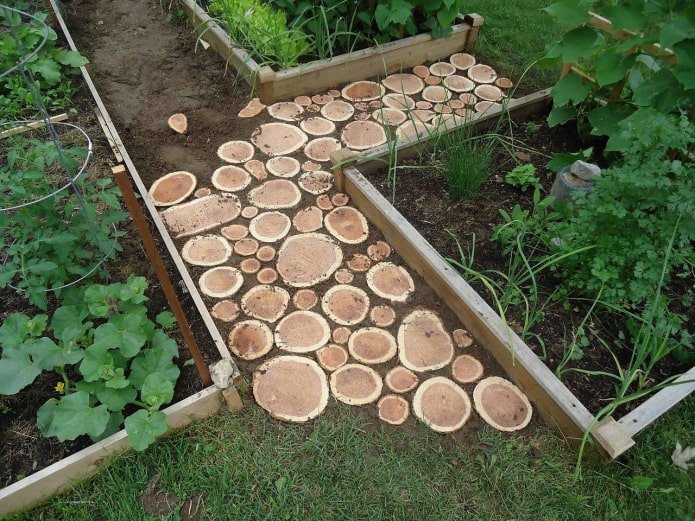
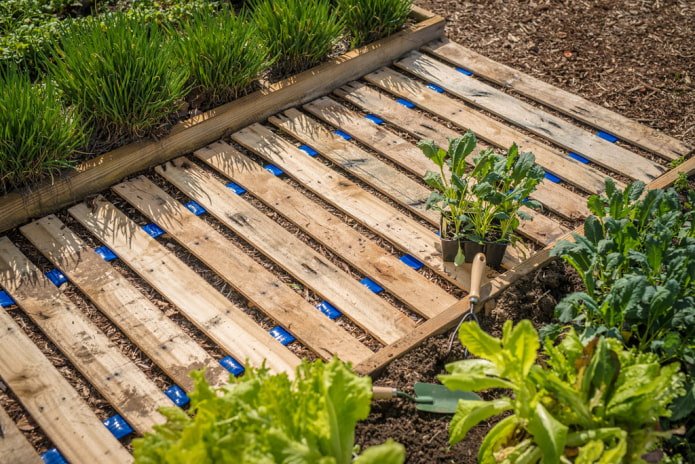
Brick
Let’s continue the topic of construction waste and remember about stronger and more reliable materials – extra bricks after building a house, bathhouse, fence or stove. If you carefully prepare the base by filling and compacting the soil, the brick pavement will last for many years.
In addition to brick, unnecessary foam blocks or leftover paving slabs that you used to decorate the front entrance area of your estate will do for arranging paths.
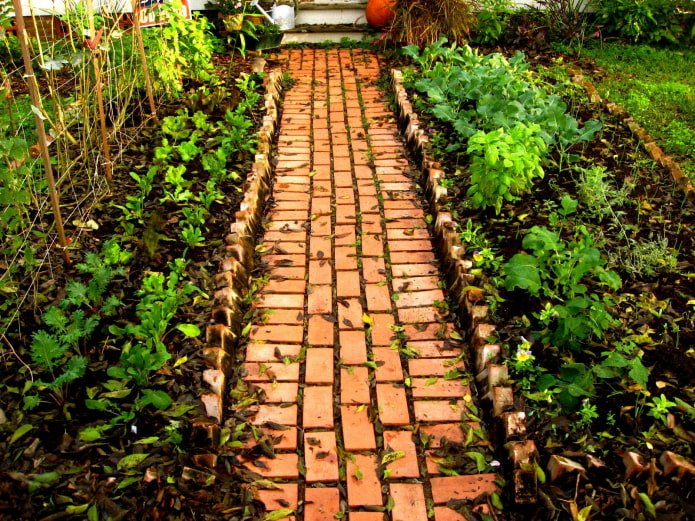
Crushed stone
Paths covered with small-fraction stone look neat: crushed stone, pebbles, gravel. Everything is good about them: they are hygienic, attractive, and dry quickly after rain. To prevent the fragments from flying everywhere, it is better to limit the plots with sides. And do not be greedy – the thicker the rock layer, the longer the garden paths will last.
Not every owner will be able to get a significant amount of crushed stone for free or inexpensively. It is easier to get sand, which will not last long, but will be a beautiful, pleasant and convenient surface.
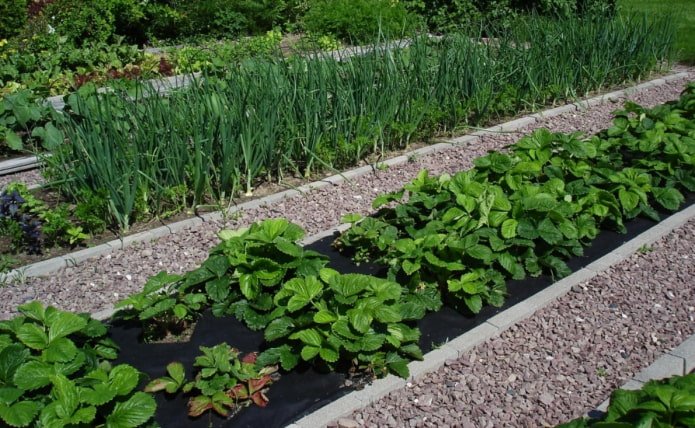
Roofing felt
Roll roofing materials do not allow moisture to pass through, do not slip underfoot and are also often left in stock after summer cottage construction. The roofing felt will last 2-3 seasons, and this is a decent result, given the low cost and ease of installation between the beds, so you can specially purchase a roll or two for arranging paths.
Modern types of fused roofing, such as Technonicol, are more expensive, but they are much more resistant to wear in the garden.
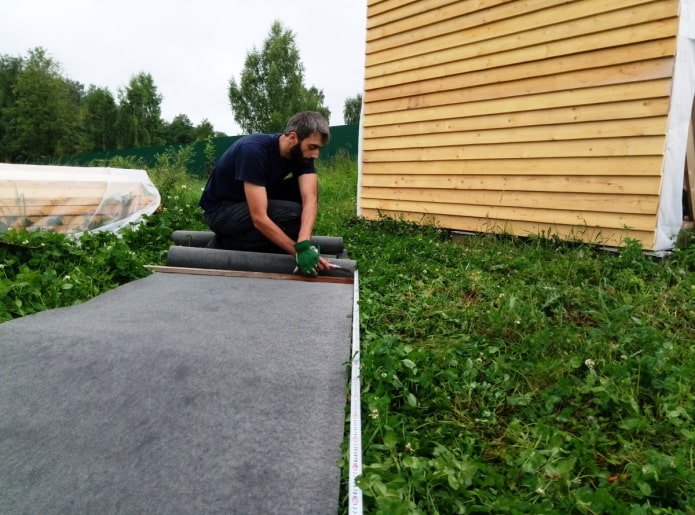
Agrofibre
An affordable and high-speed way to improve the passages between the beds is to cover the ground with spunbond or other non-woven material that you are used to using. Few people now refuse a useful invention for covering plants for the winter and mulching plantings, which means you have supplies. And if not, it’s time to test the miracle fabric in action.
Paths made of agrofibre are unlikely to last until the end of the season if the base is not properly prepared. The soil must be well-trampled and free of sharp stones, otherwise the covering will quickly tear.
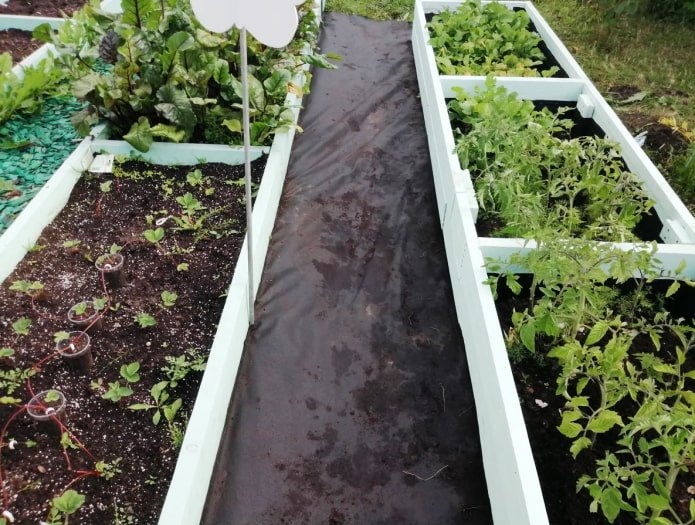
Carpets
It is easy to lay out paths between beds from worn-out carpets or unnecessary scraps of carpet, but it is better to take synthetic products. They do not rot, are easy to wash and dry quickly in the sun. The undoubted advantage of this solution is the ability to move the paths anywhere in a couple of movements. Aesthetics is questionable, but if you are only interested in the practical side, why not?
The longest lasting in the difficult conditions of the garden are rugs with a rubberized backing and a short, hard pile.
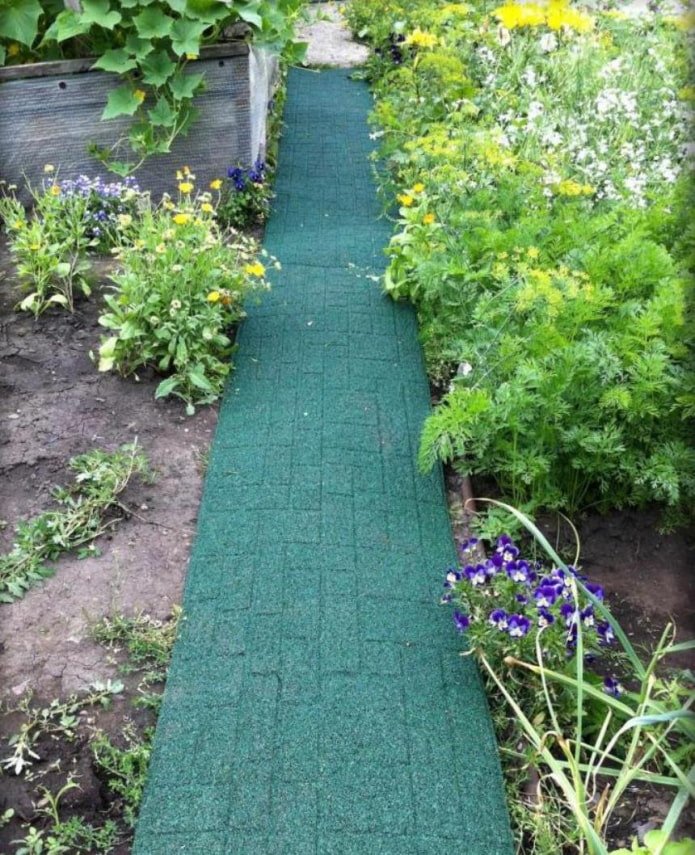
Tires
Tires are also waterproof and non-slip, so they are great for arranging garden paths with your own hands. The idea comes down to finding raw materials: will you be able to find a sufficient number of bald and leaky tires? If your professional activity is connected with cars, you will probably be able to. Avid motorists will undoubtedly have a couple of used tires in their stash.
In the fresh air under the scorching sun, tires soon begin to turn into dust and release harmful compounds into the soil, so at the first signs of damage, it is better to get rid of the dangerous coating.
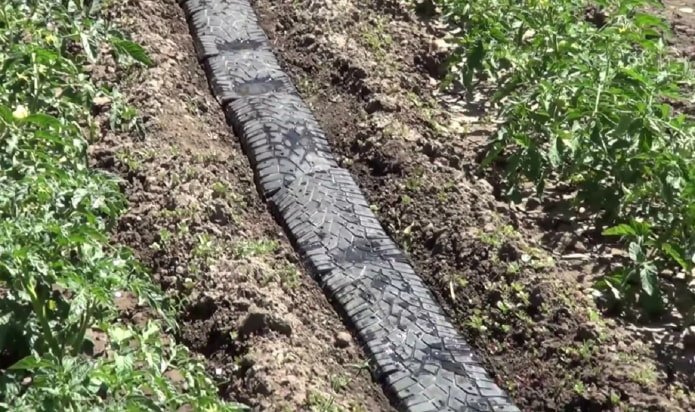
Bottles
Yes, a specific and creative way of arranging paths between beds, but what if you have an arsenal of empty glass bottles or jars at your dacha? Having filled them with sand in advance and dug them into the ground vertically with the bottoms up, you will get an original landscape unit and will ensure yourself comfort when walking for a long time, since the glass structure perfectly “reinforces” the soil.

The best way out is to approach the problem thoroughly and build solid paths from rubble stone, decking, porcelain stoneware or other reliable and attractive material. But when there is no possibility, these simple ideas can help you out.
Now reading:
- Bedroom sets: 33 photos and stylish design solutions.
- What kind of rug is suitable for the hallway? – types, functions and 27 photos of design
- Ideas for a children’s room of 12 m²: design photos for girls and boys
- Types of ceiling plinths for stretch ceilings.
- Burgundy wallpaper in the interior: 55 examples for the living room, kitchen, bedroom and children’s room